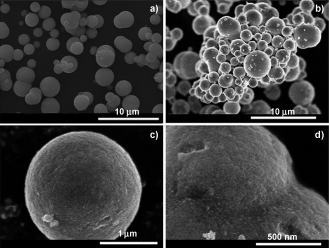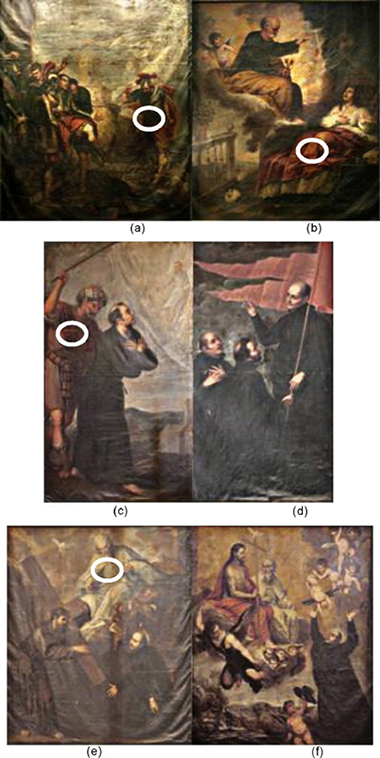Artículos SCI
2009
2009
Materiales de Diseño para la Energía y Medioambiente
The hydrothermal conversion of kaolinite to kalsilite: Influence of time, temperature, and pH
Becerro, AI; Escudero, A; Mantovani, MAmerican Mineralogist, 94 (2009) 11-12
Show abstract ▽
Kalsilite (the low-temperature form of KAlSiO4) is used as the precursor of leucite, an important component in porcelain-fused-to-metal and ceramic-restoration systems, and it has also been proposed as a high-thermal expansion ceramic for bonding to metals. The present study reports the hydrothermal synthesis and characterization of pure kalsilite from kaolinite in subcritical conditions, as well as the characterization of the intermediate products by means of XRD, 29Si and 27Al MAS NMR, IR, SEM, and TEM. Effects of time, temperature, and pH on the reaction products are analyzed. The experimental data indicate that pure kalsilite is obtained after hydrothermal treatment of kaolinite at 300 °C for 12 h in 0.5 M KOH solution. Longer reaction times increase the crystallinity of the structure, whereas lower reaction times give rise to the metastable ABW-type KAlSiO4 polymorph. Lower temperatures are not sufficient to produce kalsilite, but zeolite W is obtained instead as the unique reaction product. Finally, the pH of the aqueous solution in contact with kaolinite is an important parameter for the synthesis of kalsilite, which must be ≥13.70.
Noviembre, 2009 | DOI: 10.2138/am.2009.3284
Química de Superficies y Catálisis
Self-Assembling of Er2O3-TiO2 Mixed Oxide Nanoplatelets by a Template-Free Solvothermal Route
Julian-Lopez, B; Martos, M; Ulldemolins, N; Odriozola, JA; Cordoncillo, E; Escribano, PChemistry-A European Journal, 15 (2009) 12426-12434
Show abstract ▽

An easy solvothermal route has been developed to synthesize the first mesoporous Er2O3-TiO2 mixed oxide spherical particles composed of crystalline nanoplatelets, with high surface area and narrow pore size distribution. This synthetic strategy allows the preparation of materials at low temperature with interesting textural properties without the use of surfactants, as well as the control of particle size and shape. TEM and Raman analysis confirm the formation of nanocrystalline Er2O 3-TiO2 mixed oxide. Mesoscopic ordered porosity is reached through the thermal decomposition of organic moieties during the synthetic process, thus leading to a template-free methodology that can be extended to other nanostructured materials. High specific surface areas (up to 313 m 2g-1) and narrow pore size distributions are achieved in comparison to the micrometric material synthesized by the traditional sol-gel route. This study opens new perspectives in the development, by solvothermal methodologies, of multifunctional materials for advanced applications by improving the classical pyrochlore properties (magnetization, heat capacity, catalysis, conductivity, etc.). In particular, since catalytic reactions take place on the surface of catalysts, the high surface area of these materials makes them promising candidates for catalysts. Furthermore, their spherical morphology makes them appropriate for advanced technologies in, for instance, ceramic inkjet printers.
Noviembre, 2009 | DOI: 10.1002/chem.200901423
Advanced combined application of μ-X-ray diffraction/μ-X-ray fluorescence with conventional techniques for the identification of pictorial materials from Baroque Andalusia paintings
Herrera, LK; Montalbani, S; Chiavari, G; Cotte, M; Sole, VA; Bueno, J; Duran, A; Justo, A; Perez-Rodriguez, JLTalanta, 80 (2009) 71-83
Show abstract ▽

The process of investigating paintings includes the identification of materials to solve technical and historical art questions, to aid in the deduction of the original appearance, and in the establishment of the chemical and physical conditions for adequate restoration and conservation. In particular, we have focused on the identification of several samples taken from six famous canvases painted by Pedro Atanasio Bocanegra, who created a very special collection depicting the life of San Ignacio, which is located in the church of San Justo y Pastor of Granada, Spain. The characterization of the inorganic and organic compounds of the textiles, preparation layers, and pictorial layers have been carried out using an XRD diffractometer, SEM observations, EDX spectrometry, FT-IR spectrometry (both in reflection and transmission mode), pyrolysis/gas chromatography/mass spectrometry and synchrotron-based μ-X-ray techniques. In this work, the advantages over conventional X-ray diffraction of using combined synchrotron-based μ-X-ray diffraction and μ-X-ray fluorescence in the identification of multi-layer paintings is demonstrated.
Noviembre, 2009 | DOI: 10.1016/j.talanta.2009.06.032
Química de Superficies y Catálisis
Ionic liquid templated TiO2 nanoparticles as a support in gold environmental catalysis
Avellaneda, RS; Ivanova, S; Sanz, O; Romero-Sarria, F; Centeno, MA; Odriozola, JAApplied Catalysis B-Environmental, 93 (2009) 140-148
Show abstract ▽

This work presents the synthesis of a nanostructured titania support and its subsequent utilization for the gold particles deposition and application in the reaction of the CO oxidation. A functionalized ionic liquid has been used as a templating agent for the titanium oxide synthesis resulting in a high specific surface nanostructured titania anatase. The as prepared support was then used for gold nanoparticles deposition without ionic liquid removal in order to study the possible role of the latter in the stabilization of the gold particles. The presence of ionic liquid in the catalysts results in an unusual catalytic behaviour—strong dependence on the presence of CO and changed kinetics and rate of oxidation.
Noviembre, 2009 | DOI: 10.1016/j.apcatb.2009.09.023
Reactividad de Sólidos
Combined kinetic analysis of thermal degradation of polymeric materials under any thermal pathway
Sanchez-Jimenez, PE; Perez-Maqueda, LA; Perejon, A; Criado, JMPolymer Degradation and Stability, 94 (2009) 2079-2085
Show abstract ▽
Combined kinetic analysis has been applied for the first time to the thermal degradation of polymeric materials. The combined kinetic analysis allows the determination of the kinetic parameters from the simultaneous analysis of a set of experimental curves recorded under any thermal schedule. The method does not make any assumptions about the kinetic model or activation energy and allows analysis even when the process does not follow one of the ideal kinetic models already proposed in the literature. In the present paper the kinetics of the thermal degradation of both polytetrafluoroethylene (PTFE) and polyethylene (PE) have been analysed. It has been concluded, without previous assumptions on the kinetic model, that the thermal degradation of PTFE obeys a first order kinetic law, while the thermal degradation of PE follows a diffusion-controlled kinetic model.
Noviembre, 2009 | DOI: 10.1016/j.polymdegradstab.2009.07.006
- ‹ anterior
- 389 of 422
- siguiente ›














